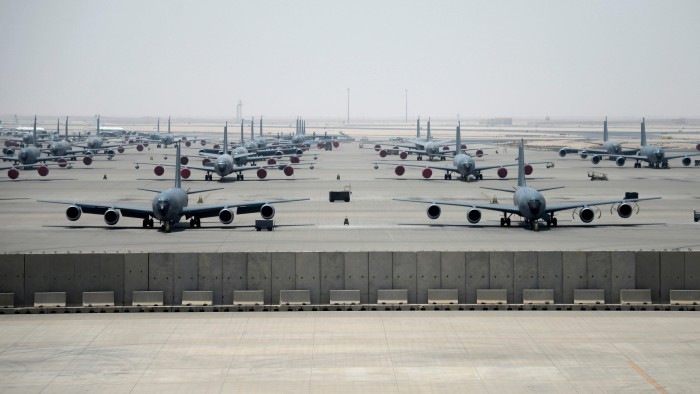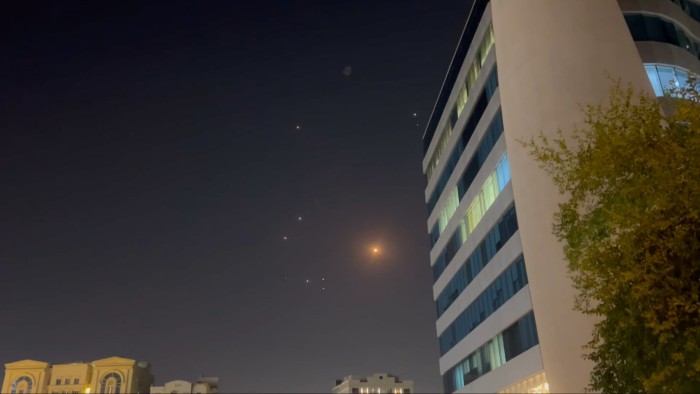Unlock the White House Watch newsletter for free
Your guide to what Trump’s second term means for Washington, business and the world
With two 12,000-feet runways stretching into the Qatari desert, Al Udeid is the largest and arguably the most important US military installation in the Middle East.
Before it was targeted by an Iranian missile barrage on Monday, satellite imagery last week had showed the US relocating dozens of aircraft from the base after Israel’s assault on Iran. Around 40 US military aircraft disappeared, shrinking the fleet at the base to just three by June 19.
Qatar’s defence ministry said that it had “successfully intercepted” all the missiles fired at the base.
Al Udeid is home to US Central Command’s Combined Air Operations Center — the nerve centre for air power in Centcom’s entire area of responsibility, which stretches from Egypt to Central Asia. It is also the operational headquarters for the UK’s Royal Air Force in the Gulf region.
From the base, American, British and other allied officers have co-ordinated air campaigns in Iraq and Syria, drone strikes in Yemen and logistical support for Afghanistan operations.
No US aircraft involved in the strikes against Iranian nuclear targets on Sunday used the facilities. Qatar had previously told the US it would not allow its based be used to attack Iran, its neighbour with which it traditionally had good relations.

Built in 1996 with Qatari funding and expanded after the September 11, 2001 attacks in the US, the base today hosts more than 10,000 US personnel, along with a rotating cast of coalition partners.
About 12 square miles in size, Al Udeid also boasts a battery of Patriot anti-missile interceptors, hardened aircraft shelters, and extensive fuel storage facilities. It regularly hosts B-52 bombers, F-15 Eagle fighter jets, KC-135 refuelling tankers and surveillance aircraft like the RC-135 Rivet Joint. During the height of the war on terror, it served as a launch pad for daily strikes and resupply sorties throughout the region.
Though Al Udeid is the air hub, the main US naval presence in the Gulf is based in nearby Manama, Bahrain, home to the US Fifth Fleet. Together, the two form a complementary architecture: naval dominance in the Strait of Hormuz, and rapid air logistics and strike capability from Qatar.
Bahrain on Monday confirmed the temporary suspension of its airspace as a precautionary measure.
Al Udeid’s long-term status remains sensitive, and the base has become an uneasy symbol of American leverage in the region and the dependence of the Gulf monarchies on US military force for their security.
US lawmakers used negotiations over the base’s lease extension — which was recently renewed for a decade — as an opportunity to demand tougher Qatari stances on Hamas, Iranian proxies and terror financing.
Qatar, a small nation wary of its vulnerability to larger neighbours, has invested heavily to keep the US presence stable, spending more than $1bn on infrastructure upgrades, according to press reports.
But Qatar’s role has been a sensitive issue since regional hostilities intensified in the wake of Hamas’s attack on Israel in October 7, 2023. Qatari officials said in 2024 that Al Udeid would not serve as a launching ground for regional or external strikes, in part for fear of blowback.






